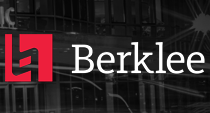
The Evolving Landscape of Sync: The Needs, Challenges, and Opportunities of New Sync Customers
Files
Abstract
TV and film production companies now produce streaming content with greater focus on traditional sync licensing. Given the popularity of global platforms’ productions compared to network television, in addition to the scale of their audiences, the power these DSP’s now hold has shifted aspects of traditional sync licensing. Social media platforms are now taking up an increasing amount of attention and can center around audio like TikTok, creating a space for more user-generated content syncing music, as well as influencer and branded content using music. Streamed fitness classes by companies like Peloton are also utilizing sync in a nontraditional format. Additionally, the evolving world of metaverses, centralized and decentralized, pose many interesting opportunities for sync deals. The issue with the increase in nontraditional licensing formats is that many uses of sync that would require a license can go unacknowledged and require lawsuits until different deal types and solutions are forced into being later. The biggest concerns today include the confusion about what constitutes influencer content, lack of proper Content ID infrastructure across different social platforms, collecting agencies lacking the ability to keep up with digital evolution, and the ability to form adaptive deals early in the metaverse.
Publication Date
7-1-2022
Campus
Valencia (Spain) Campus
Keywords
Sync; Evolution; Metaverse; Nontraditional Sync; Micro-licensing; Adaptive Deals; Fitness Streaming; Infrastructure; Collective Agencies; Content ID
Recommended Citation
Davis, Haley. “The Evolving Landscape of Sync: The Needs, Challenges, and Opportunities of New Sync Customers.” Master's Project, Berklee College of Music, 2022. https://remix.berklee.edu/graduate-studies-global-entertainment-business/82


